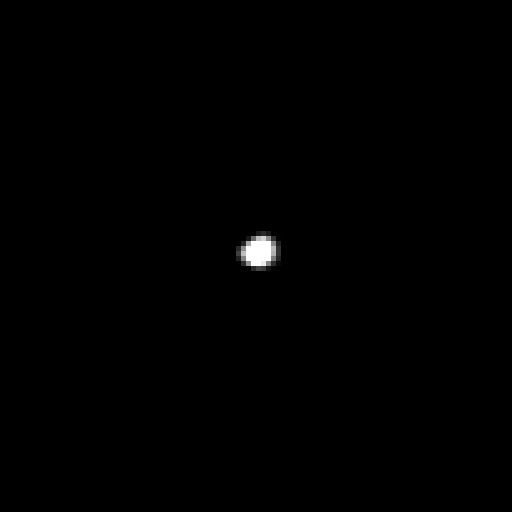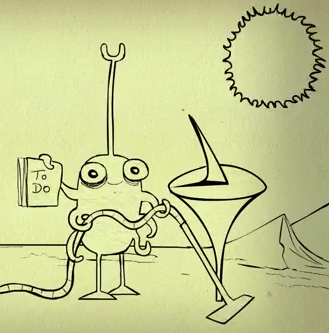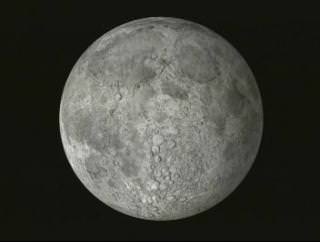Pick any object in the Universe, and it is probably spinning. Asteroids tumble end over end, planets and moons rotate on their axes, and even black holes spin. And for everything that spins, there is a maximum rate at which it can rotate. The black hole in our galaxy is spinning at nearly that maximum rate.
Continue reading “The Milky Way's Black Hole is Spinning as Fast as it Can”How Fast Does Venus Rotate?

Venus is often refereed to as “Earth’s sister planet”, thanks to the number of things it has in common with our planet. As a terrestrial planet, it is similarly composed of silicate rock and metals – which are differentiated between a metal core and a silicate crust and mantle. It also orbits within our Sun’s habitable zone, and had a similarly violent volcanic past.
But of course, there are also some major differences between our two planets. For one, Venus has an atmosphere that is incredibly dense (92 times that of Earth, in fact) and reaches temperatures that are hot enough to melt lead. In addition, the planet’s rotation is immensely slow by comparison, taking 243.025 days to complete a single rotation, and rotating backwards relative to Earth.
When discussing Venus’ rotation, it is important to note certain distinctions. Rotation is the time it takes for a planet to spin once on its axis. This is different from a planet’s revolution, which is the time it takes for a planet to orbit around another object (i.e. the Sun). So while it takes the Earth one day (24 hours) to rotate once on its axis, it takes one year (365.256 days) to revolve once around the Sun.

Orbital Period:
In Venus’ case, things work a little differently. For starters, it orbits the Sun at an average distance of about 0.72 AU (108,000,000 km; 67,000,000 mi) with almost no eccentricity. In fact, with its farthest orbit (aphelion) of 0.728 AU (108,939,000 km) and closest orbit (perihelion) of 0.718 AU (107,477,000 km), it has the most circular orbit of any planet in the Solar System.
The planet completes a revolution around the Sun every 224.65 Earth days, which means that a year on Venus last about 61.5% as long as a year on Earth. Evey 584 days, Venus completes an interior conjunction, where it lies between Earth and the Sun. It is at this point that Venus makes the closest approach to Earth of any planet, at an average distance of 41 million km.
Rotational Period:
Unlike most other planets in the Solar System, which rotate on their axes in an counter-clockwise direction, Venus rotates clockwise (called “retrograde” rotation). It also rotates very slowly, taking 243.025 Earth days to complete a single rotation. This is not only the slowest rotation period of any planet, it also means that a single day on Venus lasts longer than a Venusian year.
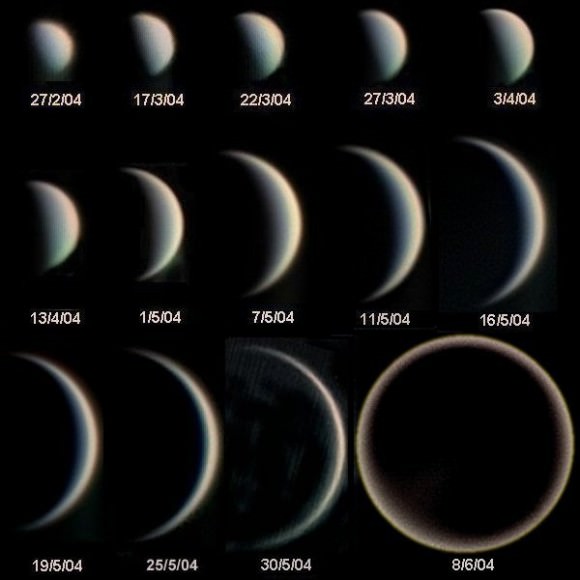
And, as noted earlier, Venus’ rotation is backwards, relative to Earth and the other bodies in the Solar System. Technically, this means that its rotational period is -243,025 days. It also means that if you could view the Solar System from the position above its celestial north pole, all of the planets (except for Uranus, which rotates on its side!) would appear to be rotating clockwise.
Venus, however, would appear to be rotating in a clockwise direction. Because of this, if you could stand on the surface of Venus, you would witness the Sun rising in the west and setting in the east. But you would be waiting a very long time to see this happen! Read on to find out why…
Sidereal vs. Solar Day:.
Another important thing to consider is the difference between a sidereal day and a solar day. A sidereal day corresponds to the amount of time it takes for a planet to rotate once on its axis, which in Venus’ case takes 243.025 Earth days. A solar day, by contrast, refers to the amount of time it takes for the Sun to reappear at the same point in the sky (i.e. between one sunrise/sunset and the next).
A Venusian (aka. Cytherean) Solar Day is the equivalent to 116.75 days on Earth, which means that it takes almost 117 days for the sun to rise, set, and return to the same place in the sky. Doing the math, we then see that a single year on Venus (224.65 Earth days) works out to just 1.92 Venusian (solar) days. Not exactly the basis for a good calendar system, is it?
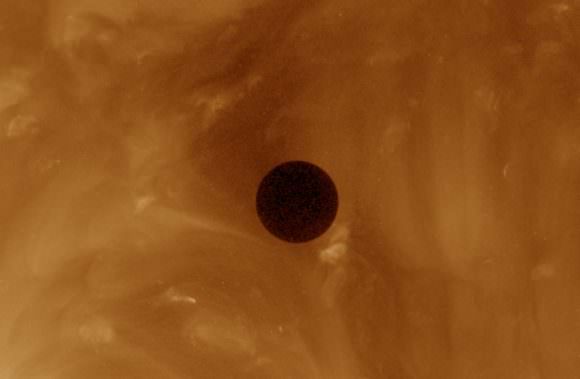
Yes, when it comes to the planet Venus, things work quite differently than they do here on Earth. Not only does a day last over half a year on our “Sister Planet”, but the Sun rises and sets on the opposite horizons, and travels across the sky in the opposite direction. The reason for this, according to astronomers, is that billions of years ago (early in the planet’s history) Venus was impacted by another large planet.
The combined momentum between the two objects averaged out to the current rotational speed and direction, causing Venus to spin very slowly in its current retrograde motion. Someday, if human beings colonize there (perhaps in floating cities) they will have to learn to get used to a day that lasts over 2800 Earth hours, not to mention sunrises and sunsets happening on the wrong horizon!
We have written many interesting articles about Venus here at Universe Today. Here’s Interesting Facts About Venus, How Long is a Day on Venus?, How Long is a Year on Venus?, What is the Average Surface Temperature on Venus?, New Map Hints at Venus’ Wet, Volcanic Past and Venus Compared to Earth.
Want more information on Venus? Here’s a link to Hubblesite’s News Releases about Venus, and here’s a link to NASA’s Solar System Exploration Guide on Venus.
We have recorded a whole episode of Astronomy Cast that’s only about planet Venus. Listen to it here, Episode 50: Venus.
Hubble Directly Measures Rotation of Cloudy ‘Super-Jupiter’

Astronomers using the Hubble Space Telescope have measured the rotation rate of an extreme exoplanet 2M1207b by observing the varied brightness in its atmosphere. This is the first measurement of the rotation of a massive exoplanet using direct imaging.
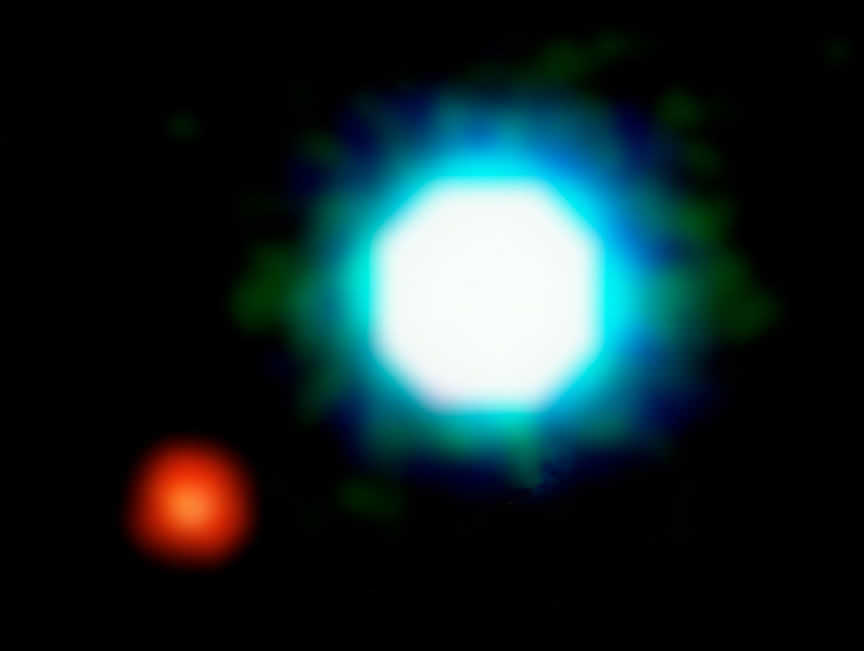
Little by little we’re coming to know at least some of the 2,085 exoplanets discovered to date more intimately despite their great distances and proximity to the blinding light of their host stars. 2M1207b is about four times more massive than Jupiter and dubbed a “super-Jupiter”. Super-Jupiters fill the gap between Jupiter-mass planets and brown dwarf stars. They can be up to 80 times more massive than Jupiter yet remain nearly the same size as that planet because gravity compresses the material into an ever denser, more compact sphere.
2M1207b lies 170 light years from Earth and orbits a brown dwarf at a distance of 5 billion miles. By contrast, Jupiter is approximately 500 million miles from the sun. You’ll often hear brown dwarfs described as “failed stars” because they’re not massive enough for hydrogen fusion to fire up in their cores the way it does in our sun and all the rest of the main sequence stars.
Researchers used Hubble’s exquisite resolution to precisely measure the planet’s brightness changes as it spins and nailed the rotation rate at 10 hours, virtually identical to Jupiter’s. While it’s fascinating to know a planet’s spin, there’s more to this extraordinary exoplanet. Hubble data confirmed the rotation but also showed the presence of patchy, “colorless” (white presumably) cloud layers. While perhaps ordinary in appearance, the composition of the clouds is anything but.
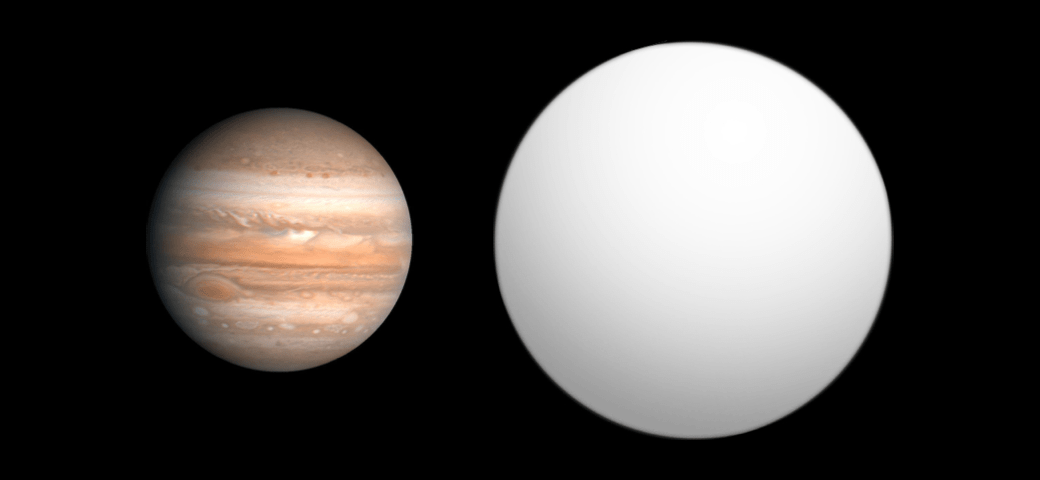
The planet appears bright in infrared light because it’s young (about 10 million years old) and still contracting, releasing gravitational potential energy that heats it from the inside out. All that extra heat makes 2M1207b’s atmosphere hot enough to form “rain” clouds made of vaporized rock. The rock cools down to form tiny particles with sizes similar to those in cigarette smoke. Deeper into the atmosphere, iron droplets are forming and falling like rain, eventually evaporating as they enter the lower levels of the atmosphere.
“So at higher altitudes it rains glass, and at lower altitudes it rains iron,” said Yifan Zhou of the University of Arizona, lead author on the research paper in a recent Astrophysical Journal. “The atmospheric temperatures are between about 2,200 to 2,600 degrees Fahrenheit.” Every day’s a scorcher on 2M1207b.
Both Jupiter and Saturn also emit more heat than they receive from the sun because they too are still contracting despite being 450 times older. The bigger you are, the slower you chill.
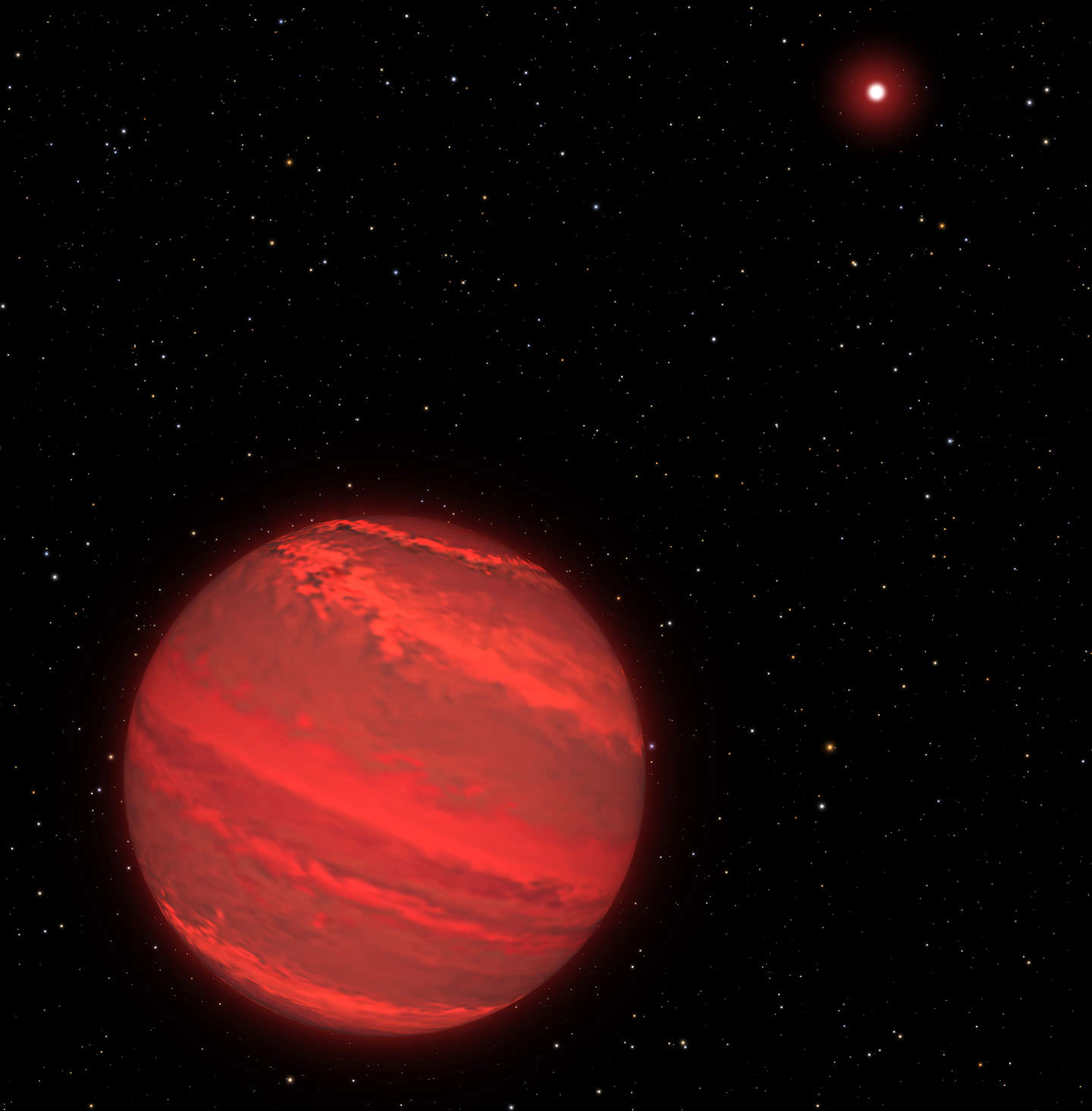
All the planets in our Solar System possess only a fraction of the mass of the Sun. Even mighty Jove is a thousand times less massive. But Mr. Super-Jupiter’s a heavyweight compared to its brown dwarf host, being just 5-7 times less massive. While Jupiter and the rest of the planets formed by the accretion of dust and rocks within a clumpy disk of material surrounding the early Sun, it’s thought 2M1207b and its companion may have formed throughout the gravitational collapse of a pair of separate disks.
This super-Jupiter will an ideal target for the James Webb Space Telescope, a space observatory optimized for the infrared scheduled to launch in 2018. With its much larger mirror — 21-feet (6.5-meters) — Webb will help astronomers better determine the exoplanet’s atmospheric composition and created more detailed maps from brightness changes.
Teasing out the details of 2M1207b’s atmosphere and rotation introduces us to a most alien world the likes of which never evolved in our own Solar System. I feel like I’m aboard the Starship Enterprise visiting far-flung worlds. Only this is better. It’s real.
How Long is a Day on Earth?
I’m going to ask you how long a day is on Earth, and you’re going to get the haunting suspicion that this is a trap. Your instincts are right, it’s a trap! The answer may surprise you.
How long is a day on Earth? Or more specifically, how long does it take for the Earth to turn once on its axis? For all the stars to move through the sky and return to their original position? Go ahead, and yell your answer answer at the screen… 24 hours?
Wrong! It only takes 23 hours, 56 minutes and 4.0916 seconds for the Earth to turn once its axis. Unless that’s what you said. In which case, congratulations!
I’m sure you’re now stumbling around in an incoherent state, trying to understand how you could have possibly messed this up. Were you reprogrammed by the hidden chronology conspiracy? Have time travellers been setting back all your clocks every day by 4 minutes? How was your whole life a lie?
Here’s the deal. When you consider a day, you’re probably thinking of your trusty clock, or maybe that smartphone lock screen that clearly measures 24 hours.
What you have come to understand as a “day” is classified by astronomers as a solar day. It’s the amount of time it takes for the Sun to move through the sky and return to roughly the same spot.
This is different from the amount of time it takes for the Earth to turn once on its axis – the 23 hours, 56 minutes. Also known as a sidereal day.
Why are these two numbers different? Imagine the Earth orbiting the Sun, taking a full 365 days, 5 hours, 48 minutes and 46 seconds to complete the entire journey. At the same time, the Earth is spinning on its axis.
Each day that goes by, the Earth needs to turn a little further for the Sun to return to the same place in the sky.… And that extra time is about 4 minutes.
If we only measured sidereal days, the position of the Sun would slip back, day after day. For half of the year, the Sun would be up between 12am and 12pm, and for the other half, it would be between 12pm and 12am. There would be no connection between what time it is, and whether or not the Sun is in the sky.
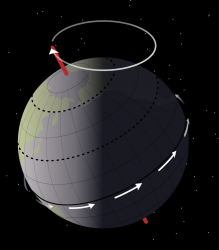
Can you imagine teaching your children how to read a clock, and then getting them to multiply that by the calendar to figure out when My Little Pony: Friendship is Magic starts? Madness.
Better to keep them in the dark, teach them that a day is 24 hours, and deny all knowledge when they get a little older, and start to ask you challenging questions. But pedants among you already knew that, didn’t you?
You already knew that a sidereal day is a little shorter than a solar day, and that everyone else has been living a lie. You’re the only one who can read the signs and know the terrifying truth. Aren’t you? Well, I’m here to tell you that you’re wrong too. There’s a deeper conspiracy that you’re not a part of. Dear Pedant, your life is also a lie.
The axis of the Earth’s pole, the imaginary line that you could draw between the south pole and the north pole is currently pointed roughly at Polaris, aka The North Star. But we’re wobbling like a top, and where the axis is pointing is slowly precessing westward over the course of 26,000 years. This means that a sidereal day is actually 0.0084 seconds shorter when you account for this extra movement of the Earth’s axis.
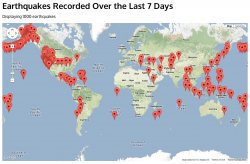
There are other events that can increase or decrease the length of an Earth day. Because of our tidal interactions with the Moon, the length of a day on Earth has increased by about 1.7 milliseconds over the last 100 years. Powerful earthquakes can change the Earth’s rotation time by a few microseconds depending on how the tectonic plates shove around. Even as the glaciers melt, the rotation speed slows down a little more.
So, if someone asks you how long a day is, make sure they clarify whether it’s a solar day or a sidereal day. And then ask if they’d like you to incorporate the Earth’s precession, tidal locking and recent earthquakes into the calculation.
If they give you a knowing nod, congratulations, you’re talking to another member of the vast chronology conspiracy.
When did you discover your whole life was a lie? Tell us in the comments below.
Is Phobos Doomed?
What fate awaits Phobos, one of the moons of Mars?
“All these worlds are yours except Europa, attempt no landing there.”
As much as I love Arthur C. Clarke and his books, I’ve got to disagree with his judgement on which moons we should be avoiding. Europa is awesome. It’s probably got a vast liquid ocean underneath its icy surface. There might even be life swimming down there, ready to be discovered. Giant freaky Europa whales or some kind of alien sharknado. Oh man, I just had the BEST idea for a movie.
So yea, Europa’s fine. The place we should really be avoiding is the Martian Moon Phobos. Why? What’s wrong with Phobos? Have I become some kind of Phobo…phobe? Is there any good reason to avoid this place?
Well first, its name tells us all we need to know. Phobos is named for the Greek god of Horror, and I don’t mean like the usual gods of horror as in Clive Barker, John Carpenter or Wes Craven, I mean that Phobos is the actual personification of Fear… possibly with a freaky lion’s head. And… there’s also the fact that Phobos is doomed.
Literally doomed. Living on borrowed time. Its days are numbered. It’s been poisoned and there’s no antidote. It’s got metal shards in its heart and the battery on it’s electro-magnet is starting to brown out. More specifically, in a few million years, the asteroid-like rock is going to get torn apart by the Martian gravity and then get smashed onto the planet.
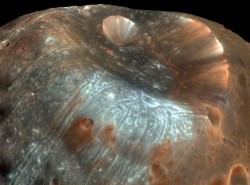
It all comes down to tidal forces. Our Moon takes about 27 days to complete an orbit, and our planet takes around 24 hours to complete one rotation on its axis. Our Moon is pulling unevenly on the Earth and slowing its rotation down.
To compensate, the Moon is slowly drifting away from us. We did a whole episode about this which we’ll link at the end of the episode. On Mars, Phobos only takes 8 hours to complete an orbit around the planet. While the planet takes almost 25 hours to complete one rotation on its axis. So Phobos travels three times around the planet for every Martian day. And this is a problem.
It’s actually speeding up Mars’ rotation. And in exchange, it’s getting closer and closer to Mars with every orbit. The current deadpool gives the best odds on Phobos taking 30 to 50 million years to finally crash into the planet. The orbit will get lower and lower until it reaches a level known as the Roche Limit. This is the point where the tidal forces between the near and far sides of the moon are so different that it gets torn apart. Then Mars will have a bunch of teeny moons from the former Phobos.
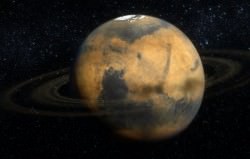
(Photo Credit: © Hive Studios)
And then good news! Those adorable moonlets will get further pulverized until Mars has a ring. But then bad news… that ring will crash onto the planet in a cascade of destruction to be described as “the least fun balloon drop of all time”. So, you probably wouldn’t want to live on Mars then either.
Count yourself lucky. What were the chances that we would exist in the Solar System at a time that Phobos was a thing, and not a string of impacts on the surface of Mars.
Enjoy Phobos while you can, but remember that real estate there is temporary. Might I suggest somewhere in the alien sharknado infested waters of Europa instead?
What do you think. Did Arthur C Clarke have it wrong? Should we explore Europa?
And if you like what you see, come check out our Patreon page and find out how you can get these videos early while helping us bring you more great content!
Watch Pluto and Charon Engage in Their Orbital Dance
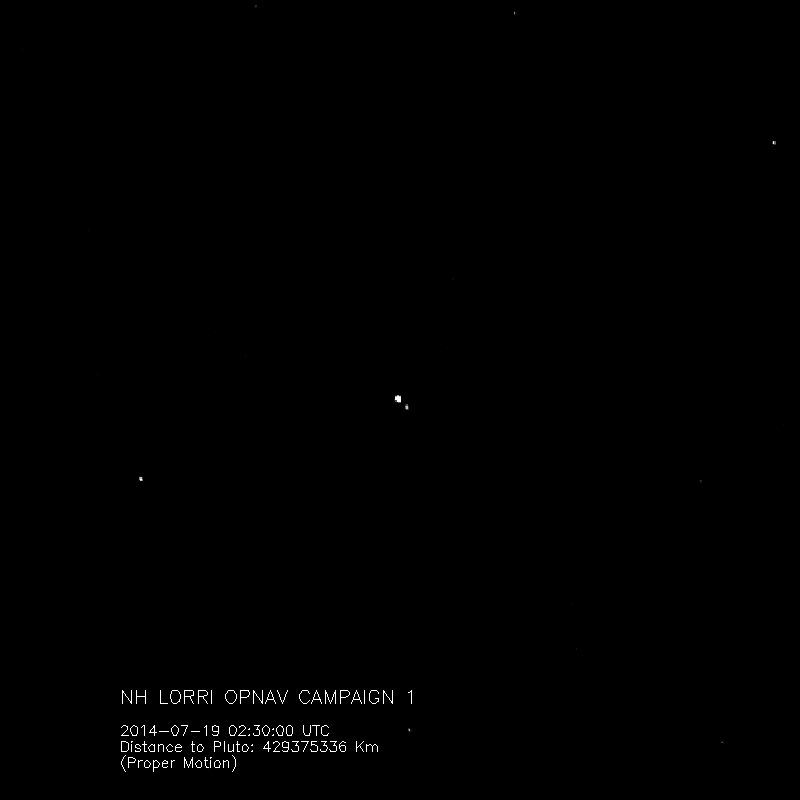
Now here’s something I guarantee you’ve never seen before: a video of the dwarf planet Pluto and its largest moon Charon showing the two distinctly separate worlds actually in motion around each other! Captured by the steadily-approaching New Horizons spacecraft from July 19–24, the 12 images that comprise this animation were acquired with the Long Range Reconnaissance Imager (LORRI) instrument from distances of 267 million to 262 million miles (429 million to 422 million km) and show nearly a full orbital rotation. Absolutely beautiful!
For a close-up video of the two worlds in motion, click below:
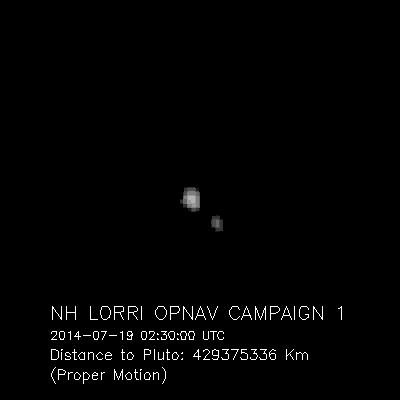
Pluto and Charon are seen circling a central gravitational point known as the barycenter, which accounts for the wobbling motion. Since Charon is 1/12th the mass of Pluto the center of mass between the two actually lies a bit outside Pluto’s radius, making their little gravitational “dance” readily apparent.
(The same effect happens with the Earth and Moon too, but since the barycenter lies 1,700 km below Earth’s surface it’s not nearly as obvious.)
“The image sequence showing Charon revolving around Pluto set a record for close range imaging of Pluto—they were taken from 10 times closer to the planet than the Earth is,” said New Horizons mission Principal Investigator Alan Stern, of the Southwest Research Institute. “But we’ll smash that record again and again, starting in January, as approach operations begin.”
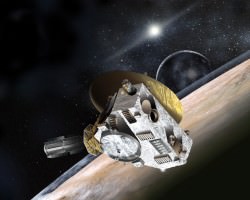
Launched January 19, 2006, New Horizons is now in the final year of its journey to the Pluto system. On August 25 it will pass the orbit of Neptune – which, coincidentally, is 25 years to the day after Voyager 2’s closest approach – and then it’s on to Pluto and Charon, which New Horizons will become the first spacecraft to fly by on July 14, 2015, at distances of 10,000 and 27,000 km respectively. Find out where New Horizons is right now here.
Source: New Horizons
Credit: NASA/Johns Hopkins University Applied Physics Laboratory/Southwest Research Institute
Rosetta Watches Comet 67P Tumbling Through Space
This is really getting exciting! ESA’s Rosetta spacecraft (and the piggybacked Philae lander) are in the home stretch to arrive at Comet 67P/Churyumov-Gerasimenko in 34 days and the comet is showing up quite nicely in Rosetta’s narrow-angle camera. The animation above, assembled from 36 NAC images acquired last week, shows 67P/C-G rotating over a total elapsed time of 12.4 hours. No longer just an extra-bright pixel, it looks like a thing now!
The animation, although fascinating, only hints at the “true” shape of the comet’s nucleus. Reflected light does create a bloom effect in the imaging sensor, especially at such small resolutions, expanding the apparent size of the comet beyond its 4-by-4-pixel size. But rest assured that much, much better images are on the way as Rosetta gets closer and closer.
Read more: How Big is Rosetta’s Comet?
The spacecraft was about 86,000 km (53,440 miles) from 67P/C-G when the images were acquired. Since that time it has cut that distance in half, and by this weekend it will be less than 36,000 km (22,370 miles) from the comet. After more than a decade of traveling around the inner Solar System Rosetta is finally arriving at its goal! Click here to see where Rosetta is now.
Stay tuned for more exciting updates from Rosetta, and learn more about the mission below:
Source: ESA’s Rosetta blog
Animation credits: ESA/Rosetta/MPS for OSIRIS Team MPS/UPD/LAM/IAA/SSO/INTA/UPM/DASP/IDA
This is the Moon, the Whole Moon and Nothing But the Moon

Take a look around the Moon… no, really, take a good look AROUND the Moon! This is a fantastic animation of our planetary partner in space made by the folks on the Lunar Reconnaissance Orbiter team at Arizona State University. Assembled from reflectance maps and digital terrain models created from data gathered by LRO’s wide-angle camera, this full 360-degree portrait of the Moon shows its surface as if it were receiving direct top-down sunlight on all points — a physical impossibility, yes, but it gives us a great view of pretty much everything (including the far side, which for obvious reasons most of us never get a good look at.)
In addition to shining a light on the lunar landscape (pun intended) the vast amounts of data used to create the view above can also be used to calculate the type of illumination that would be found on any point on the Moon, at any time, allowing for better targeted observation planning with LRO’s narrow-angle camera.
Read more about how this process was engineered here, and see a more recent result of these new capabilities below:
While the image above wouldn’t have been visible from anywhere on North America on October 15, 2013 at 2 p.m. EDT, it’s what would have been seen in the night sky above Mumbai — but no international calls to India were needed, as the view could simply be generated from the LRO WAC data and a ray-tracing algorithm that plots the angles of light and shadow across the lunar terrain. Voilà — it’s Insta-Moon*!
*Some assembly required.
Read more on the Arizona State University LROC site here (and to really blow your mind, watch the high-resolution version here.)
Want to explore the Moon on your Android or iPhone? Check out our Phases of the Moon app!
How Long is a Day on Mercury?
1/3 the distance from the Sun than Earth, it should be no surprise that a day on Mercury is a real scorcher with temperatures soaring over 400 ºC. But in addition to its solar proximity it also has an extremely slow rotation: a single day on Mercury is 58.6 Earth days long… and you thought your Mondays lasted forever!
To be even more precise, for every 2 Mercury years, 3 Mercury days pass — a 3:2 spin-orbit resonance, caused by the planet’s varying elliptical orbit. (This also makes for some interesting motions of the Sun in Mercury’s sky.)
To illustrate this, UK’s The Open University has published a new video in their 60 Second Adventures in Astronomy series… check it out above (and see more of their excellent and amusing animations here.)
Video: The Open University. Narrated by David Mitchell.
Moon Rotation
The rotation of the Moon is a strange situation. It takes the same amount of time for the Moon to complete a full orbit around the Earth as it takes for it to complete one rotation on its axis. In other words, the Moon rotation time is 27.3 days, just the same as its orbital time: 27.3 days.
What this means to us here on Earth is that the Moon always presents the same face to the Earth. We only see one side of the Moon, and not the other. And if you could stand on the surface of the Moon, the Earth would appear to just hang in the sky, not moving anywhere.
Astronomers say that the Moon is tidally locked to the Earth. At some point in the past, it did have a different rotation rate from its orbital period. But slight differences in the shape of the Moon caused the Moon to experience different amounts of gravity depending on its position. These differences acted as a brake, slowing the Moon rotation speed down until it matched its orbital period. There are other tidally locked moons in the Solar System. Pluto and its moon Charon are tidally locked to each other, so they always present the same face to one another.
We’ve written many articles about rotation for Universe Today. Here’s an article about the rotation of the Earth, and here’s an article about the rotation of Saturn.
If you’d like more info on the Moon, check out NASA’s Solar System Exploration Guide on the Moon, and here’s a link to NASA’s Lunar and Planetary Science page.
We’ve also recorded an episode of Astronomy Cast all about the Moon. Listen here, Episode 113: The Moon, Part 1.




